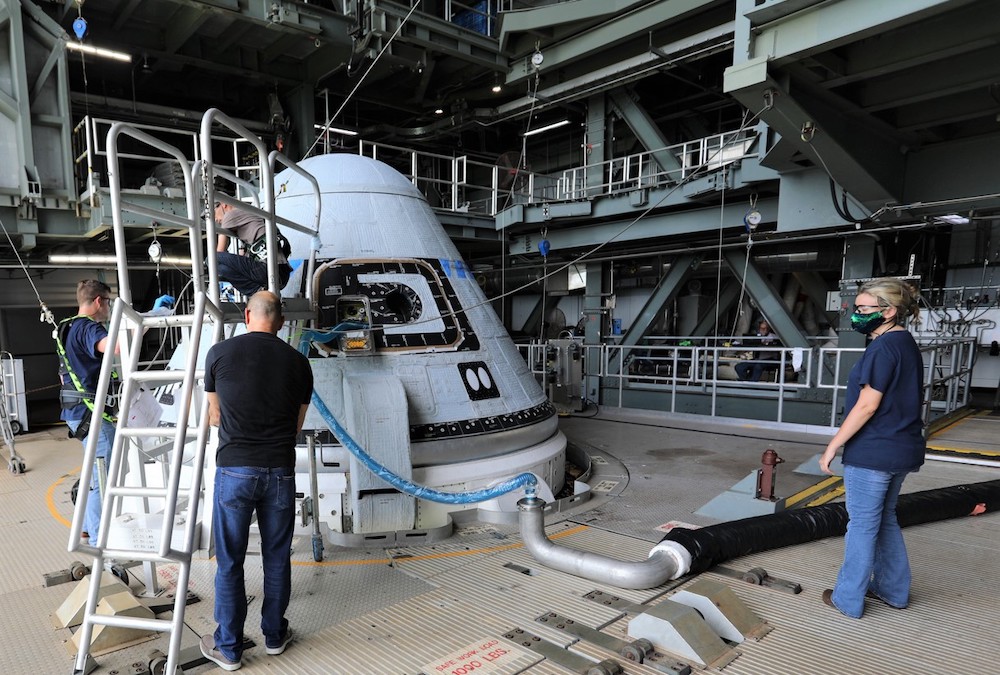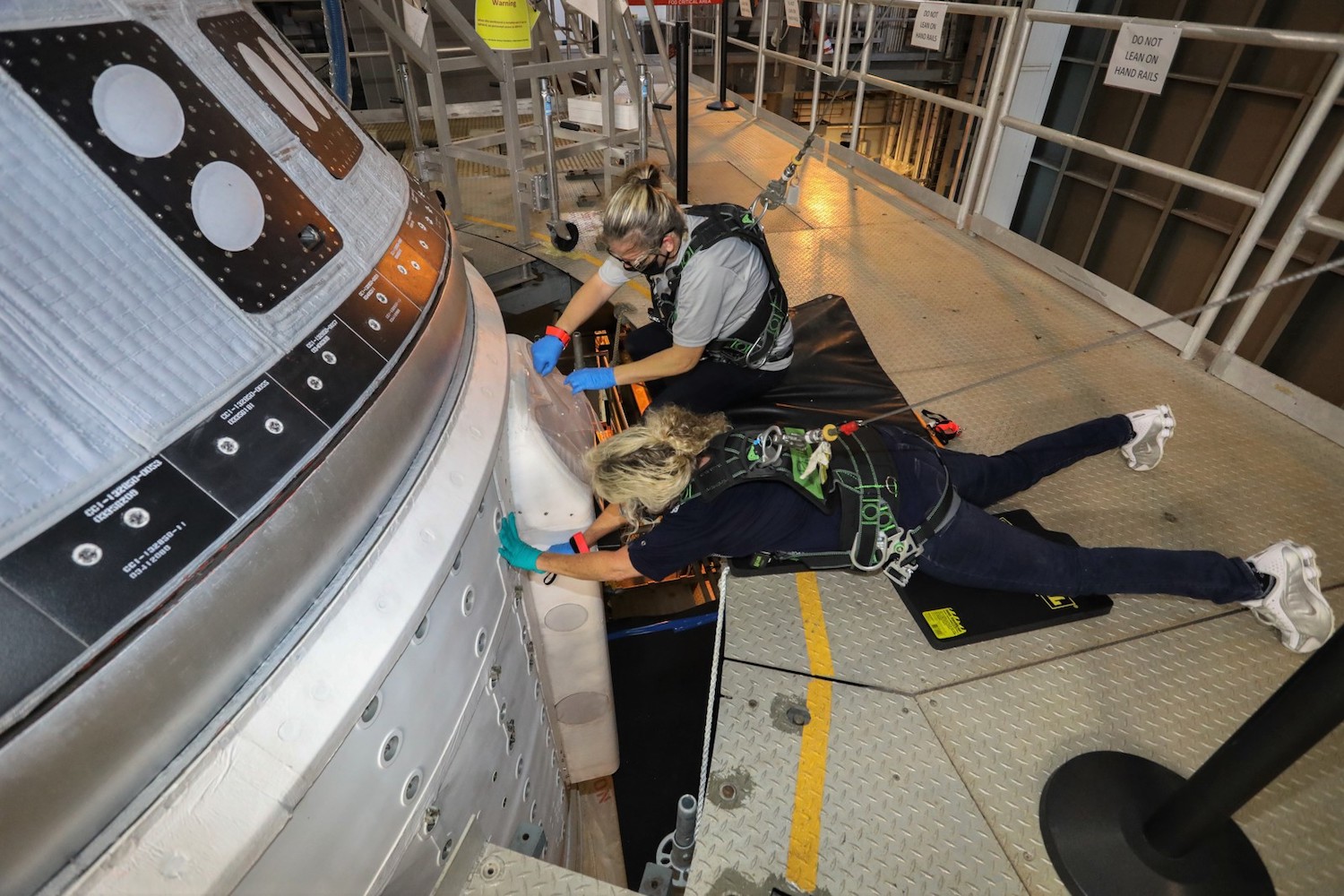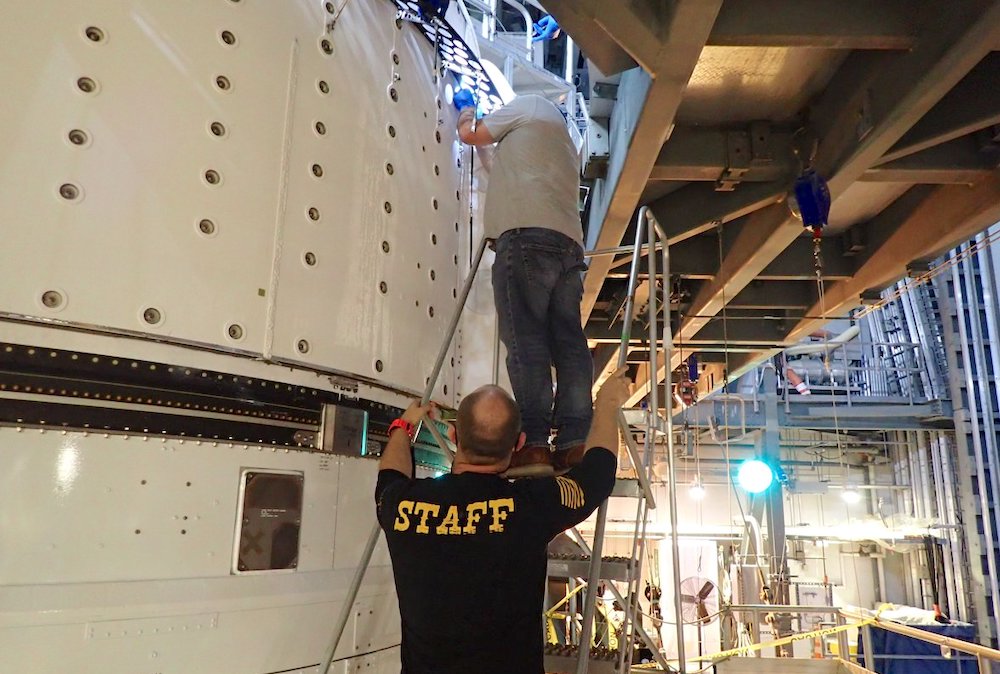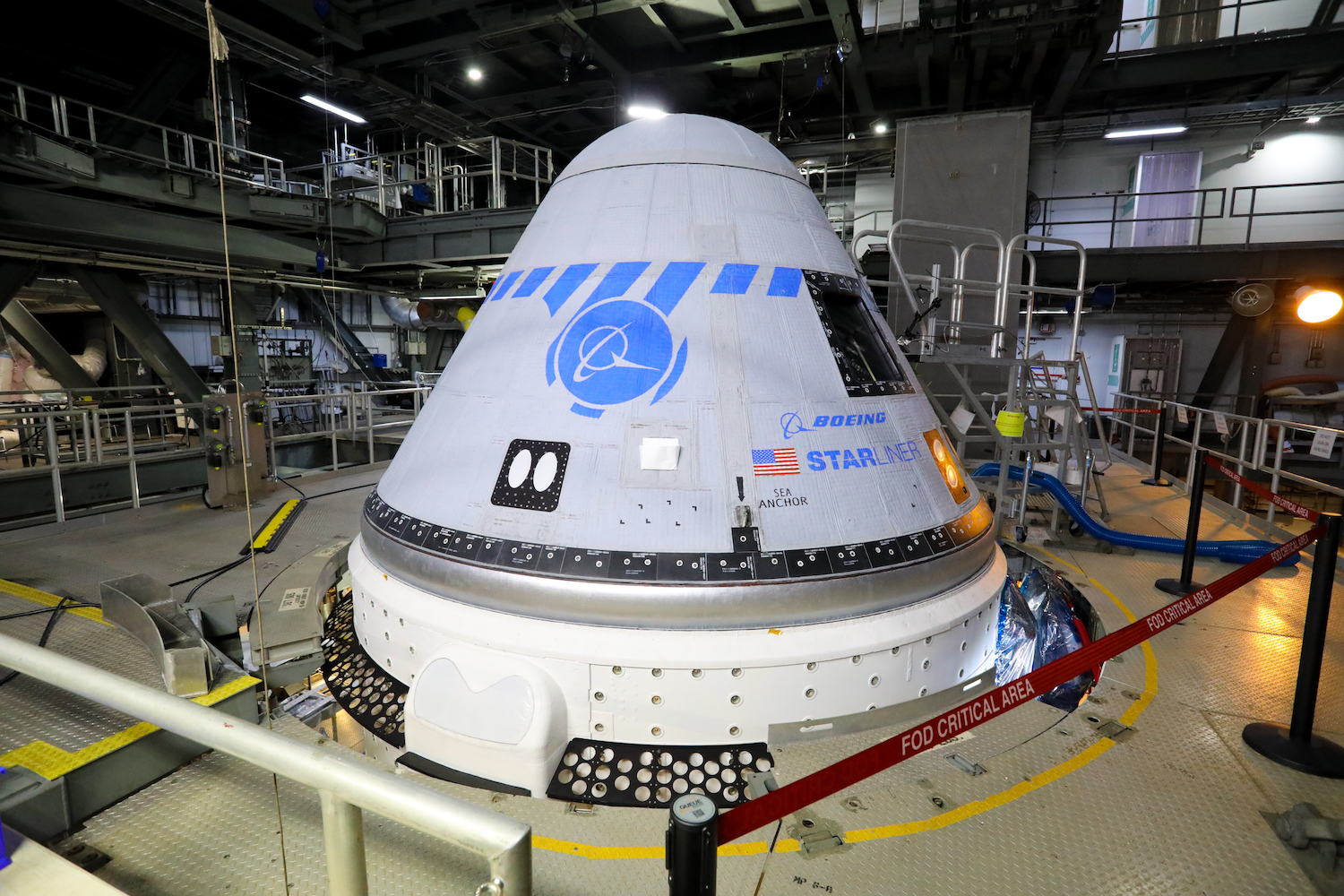Considering the trouble Boeing had with its first CST-100 Starliner launch in December 2019, when the spacecraft failed to reach the International Space Station (ISS), the aerospace giant is taking no chances with its second test mission, OFT-2. That’s why it called off the launch just a few hours before launch last week when it spotted an issue with its propulsion valves that connect to the spacecraft’s thrusters to enable abort and in-orbit maneuvering.
The engineering team spent the weekend working to resolve the issue, with Boeing posting photos (below) showing the team in action.
The good news is that Boeing is making progress toward sorting out the problem, though it appears there’s still some work to do.
In a statement released on Monday, August 9, the company said it had managed to restore functionality “on more of the 13 CST-100 Starliner propulsion system valves that did not open as designed during prelaunch system checks last week.”
It added that it had now completed “physical inspections and chemical sampling on the exterior of a number of the affected valves, which indicated no signs of damage or external corrosion.”
Boeing said that seven of the 13 valves are now operating as designed, “with inspection and remediation of the remaining affected valves to be performed in the days ahead.”
It is now working on a “systematic plan to open the affected valves, demonstrate repeatable system performance, and verify the root cause of the issue before returning Starliner to the launch pad for its OFT-2 mission.”
Right now, there’s no date for when Boeing will try again with the long-awaited un-crewed mission, though many are hoping it will be able to get underway before the end of this month.
OFT-2, when it finally lifts off, will involve a short stay at the ISS before undocking and returning to Earth five days after launch.
If the mission goes according to plan and all of Starliner’s systems are shown to be working as intended, NASA will use the spacecraft for crewed trips to and from the space station in the same way that it’s already using SpaceX’s Crew Dragon spacecraft.
But for the time being, Starliner remains atop the ULA Atlas V rocket inside the Vertical Integration Facility near Space Launch Complex-41 on Cape Canaveral Space Force Station in Florida as the engineering team continues with its vital work.
Editors' Recommendations
- Boeing’s Starliner spacecraft won’t fly first crew until next year
- NASA accidentally loses contact with legendary Voyager 2 spacecraft
- NASA’s first crewed test flight of Starliner spacecraft delayed
- How to watch NASA’s all-private crew launch to the ISS on Sunday
- NASA readies for its second all-private mission to ISS






